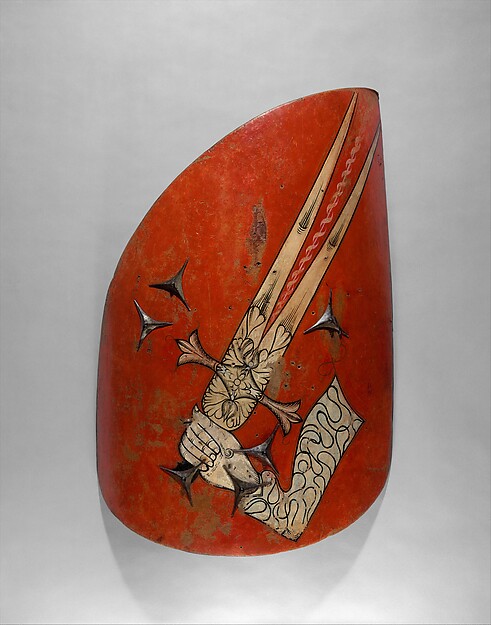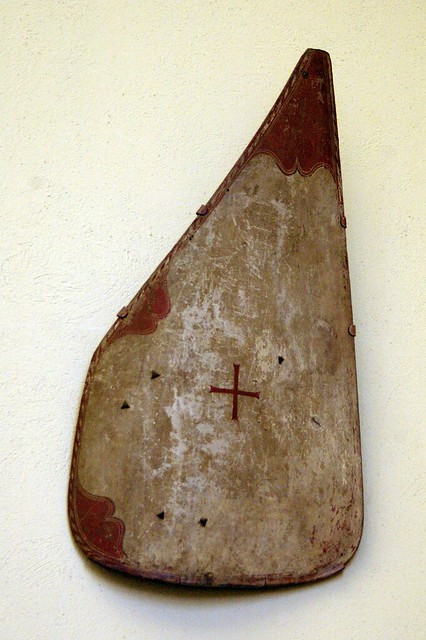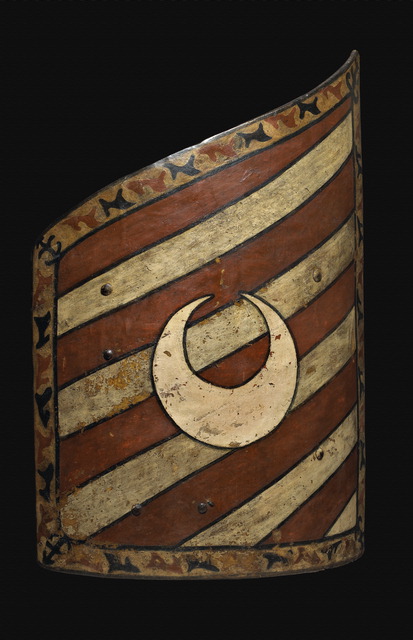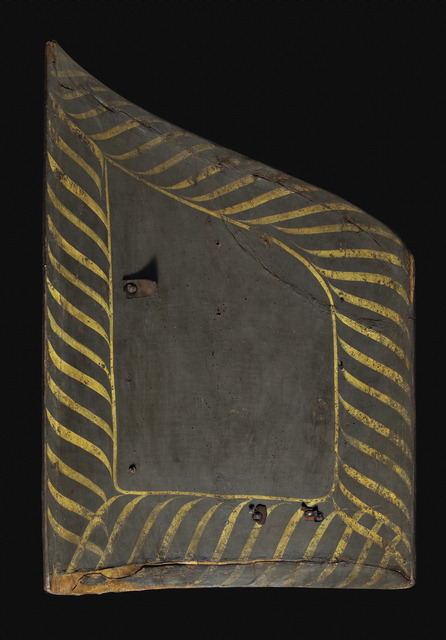
Join Amazon Prime - Watch Thousands of Movies & TV Shows Anytime - Start Free Trial Now
Hungarian shields, 16th Century
Hungarian shield with two bladed sword

Source: Metropolitan Museum of Art, New York


Hungarian-style Shield
Date: ca. 1500–1550
Medium: Wood, leather, gesso, polychromy
Dimensions: H. 82.55 cm; W. 54.91 cm
Accession Number: 49.57.1
This wing-shaped shield and others like it in the Metropolitan Museum's collection (42.50.29, .30), with the distinctive upward-sweeping back edge, were the characteristic light-cavalry shields of Hungary. During the sixteenth century, the style was adopted across much of eastern Europe by both Christian and Islamic horsemen. The shield's elongated upper edge was designed to defend the back of the head and neck against cuts from a sabre, the preferred cavalry weapon in that region. This shield is painted on its exterior with the double-bladed sword of the prophet Muhammad and on its interior with the Crucifix and instruments of the Passion. This unusual mix of Islamic and Christian symbols suggests that the shield was used in a tournament by a Christian warrior dressed in Muslim fashion. In these "Hungarian style" tournaments, the participants wore Hungarian and Turkish costumes and used sabres to strike off feathers attached to their opponents' helmets and to the apex of their painted shields. Even at a time when Turkish armies were a constant threat to eastern Europe, their costumes and tactics were imitated by their foes.

Hofjagd-und Rüstkammer, Wien
Late 16th Century
Photo by Daniel Staberg
A larger image of this Hungarian style shield in the Philadelphia Museum of Art. Hungarian shield, 1550-1600 Philadelphia Museum of Art, 1977-167-756, Bequest of Carl Otto Kretzschmar von Kienbusch, 1977 Source: Deli and Hussar: confusion, ambiguity, and hybrid identities by Robyn Dora Radway |
A larger image of this Hungarian style shield in the Philadelphia Museum of Art. Shield in the Hungarian style for use on horseback Austria, 1550-1600. Philadelphia Museum of Art Source: flikr |
 |
 |
|
Image number : 04-002282 Inventory Number : Cl.2385 Collection : Objets d'art Title : Targe hongroise ŕ décor de croissant Photo Credit : © RMN / Franck Raux Period : 16th century Technique/Material : leather (material), wood (material) Production site : Europe (centre) Location : Paris, Musée National du Moyen Âge - Thermes de Cluny Source: tforum |